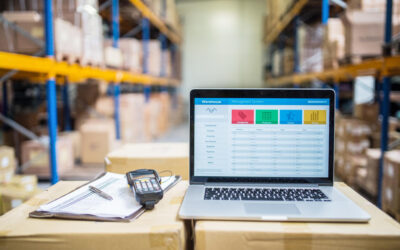There are a few things you need to know when you’re deploying your asset tracking software. These are key to your success, as, with a successful deployment, you will be able to:
- Save time
- Save money
- Maintain an accurate fixed asset register
- Lose fewer assets
- Track your colleagues’ usage of assets.
Overall, how you deploy your asset tracking software across your business, no matter how big or small the business is, helps you save time and money sooner.

Populate Your Asset Register
First of all, you’ll need to populate your asset register. This is the process of logging your assets and formalising the information you’re adding to them.
If you already have a fixed asset register in the form of a spreadsheet, you’ll be able to have this imported onto your system. This way, you can be up and running in no time.
Here, you can decide what naming conventions to assign to your assets. For example, do you need to know if your IT assets are laptops, or do you need to add the make and model to the asset’s name?
Then, you’ll be able to use bulk editing features to formalise reminders and information, such as PAT test dates, to your assets.
Use Asset Tags
Asset tags speed up your operations greatly and allow for automatic location tracking. Every time you scan an asset’s tag, a few things happen.
First of all, the asset’s profile will open. This means that if you’re using your software for tools and equipment tracking, if you’ve logged a spanner, when you scan a tag attached to the spanner, the corresponding digital profile will open. Then, you’ll be able to update maintenance data and add comments, for example.
Every time you scan an asset’s tag, the last seen location, time of scan and user who scanned the tag will also update and will be visible on a map. This way, you can create more accountability over your asset register by tracking where your assets have been and who has been interacting with them.
Make Use Of Helpful Asset Management Features
Once you’ve logged and tagged your assets, the next step is to explore the many features available to you in your asset tracking software. If you can group your assets by collections, such as one you’ve called “IT assets”, for example, this is a good time to add this data to your asset list.
After you’ve scanned an asset’s tag, too, it’s a good idea to look at the features you can use to indicate changes to your team. You may need to book equipment or add issues, depending on why your business needs asset tracking software, but now is a great time to start creating a formal process that you and your colleagues can use.
Then, you will be able to monitor your web portal, too. This way, you’ll be able to cross-reference the features you need onsite, and the features you’ll be using remotely as there will be an overlap.
Finally, it’s a good idea to play around with reports and create a few custom ones. For example, if you need a custom report that only shows you specific maintenance information, this is a good time to create one now that you’ve added your data.
You’ll then be able to export your reports and fixed asset register in pdf or excel sheet form, ready for anyone who needs to monitor, view, and use them.
itemit’s Asset Tracking Software
itemit’s asset tracking software is a cloud-based system that works with an app and integrated web portal. This means that you’ll be able to make changes onsite when you’re with assets and remotely with ease.
itemit has a wide range of features available, from IT asset management functionality to fixed asset management features, such as depreciation, to equipment checkout functionality.
Any changes you make onsite are updated across the board, for all of your colleagues to see. This means that audits and edits are simple, quick, and effective and ensures that the system remains highly scalable, no matter the size of your business.
To find out more about how itemit can help your business keep an eye on your assets, you’ll be able to contact us at team@itemit.com. You can also start your very own 14-day free trial by filling in the form below.
Asset Tracking Software
Choose a better way to track your assets
Start your free 14-day trial now
Instant access. No credit card details required.
Related articles
How to Optimise Product Inventory Management
Learn how to optimize product inventory management with effective strategies, a product inventory management system, and best practices for efficiency.
Buffer Stock in Inventory Management: How It Optimizes Supply Chain Efficiency
Learn the meaning of buffer stock, its role in inventory management, and how it optimizes supply chains. Explore strategies and tools for effective stock management.
What Is an Online Inventory Management System?
Discover what an online inventory management system is, how it works, and why it’s essential for efficient inventory tracking and business success.



